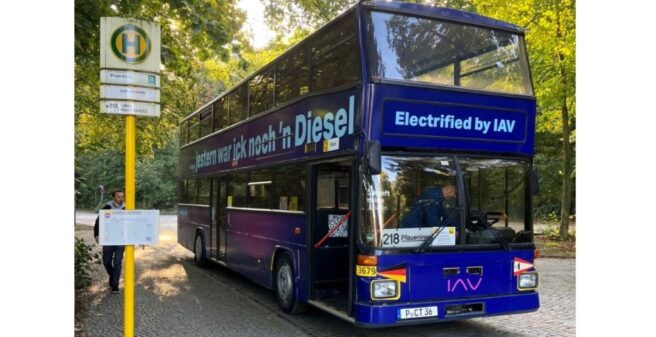
In April 2000, Berlin’s public transport company BVG set up its line 218 (then still under the line number “A 18”), which runs from the bus station at the Funkturm via Messedamm – Theodor-Heuss-Platz – Heerstraße – Am Postfenn – Havelchaussee – Kronprizessinnenweg – Wannsee S-Bahn station – Königstraße and Pfaueninselchaussee to the final stop Pfauenenisel. It takes 49 minutes from one end to the other. Initially, the line only went from Funkturm to Wannsee S-Bahn station, and in December 2017 the northern terminus was moved to Messe Nord S-Bahn station.
Non-standard, special buses were always used here. Berlin has a very active association, the “Arbeitsgemeinschaft Traditionsbus Berlin” (ATB), which takes care of preserving typical vehicles of the Berlin bus service, and – as far as possible – in running condition.
ATB usually operates one of the four services on the lines using numerous “heritage buses”, ranging from the legendary double-decker “Büssing D 2 U” from the fifties and sixties to its successor, the “DE”, to the MAN SD 200 and MAN SD 202, to the historic single-decker, all of which are part of ATB‘s fleet.
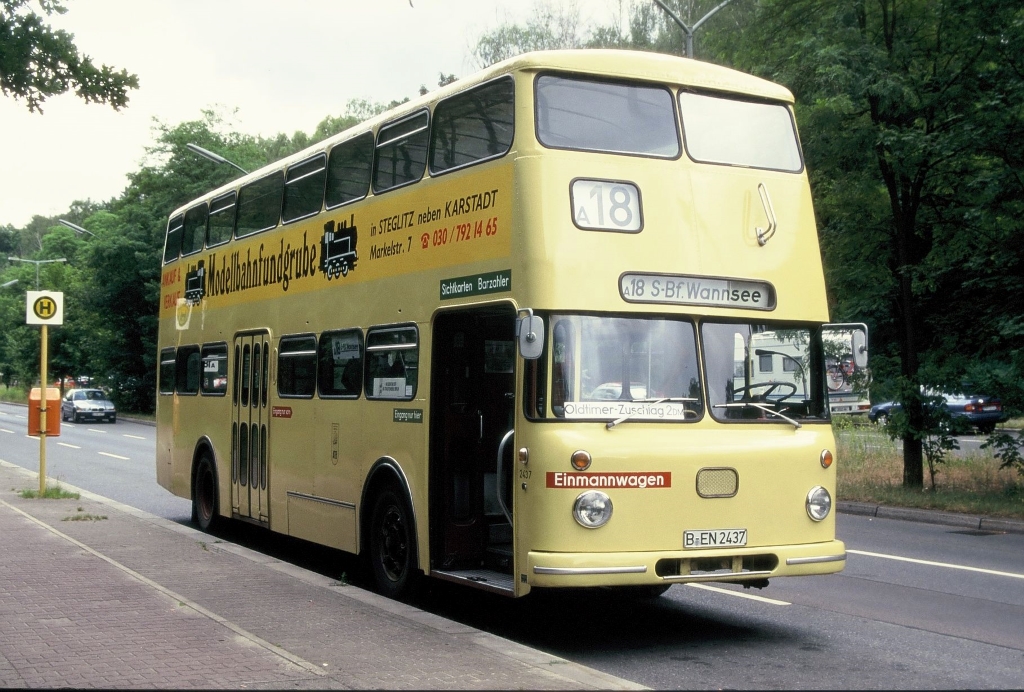
Since 13 October 2022, the BVG itself has been operating a kind of „oldtimer“ on line 218, but one that is absolutely up-to-date in terms of drive technology: BVG bus no. 3679, a MAN SD 202 built in 1990, recently being re-equipped with a state-of-the-art electric drive and battery technology.
IAV (“Ingenieurgesellschaft Auto und Verkehr”) headquartered in Berlin – and with workshops and testing grounds in Gifhorn – has converted no. 3679 into an electric double-decker with its “Elcty” conversion kit. IAV also presented a similar vehicle, former Lübeck-Travemünder Verkehrs Gesellschaft (LVG) double deck bus no. 25.
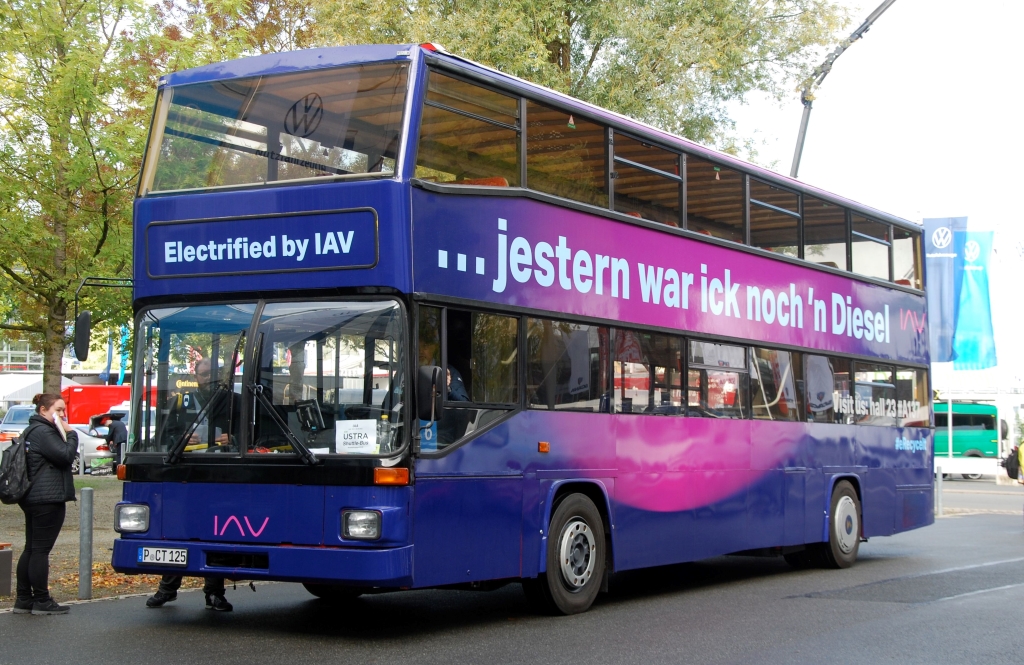
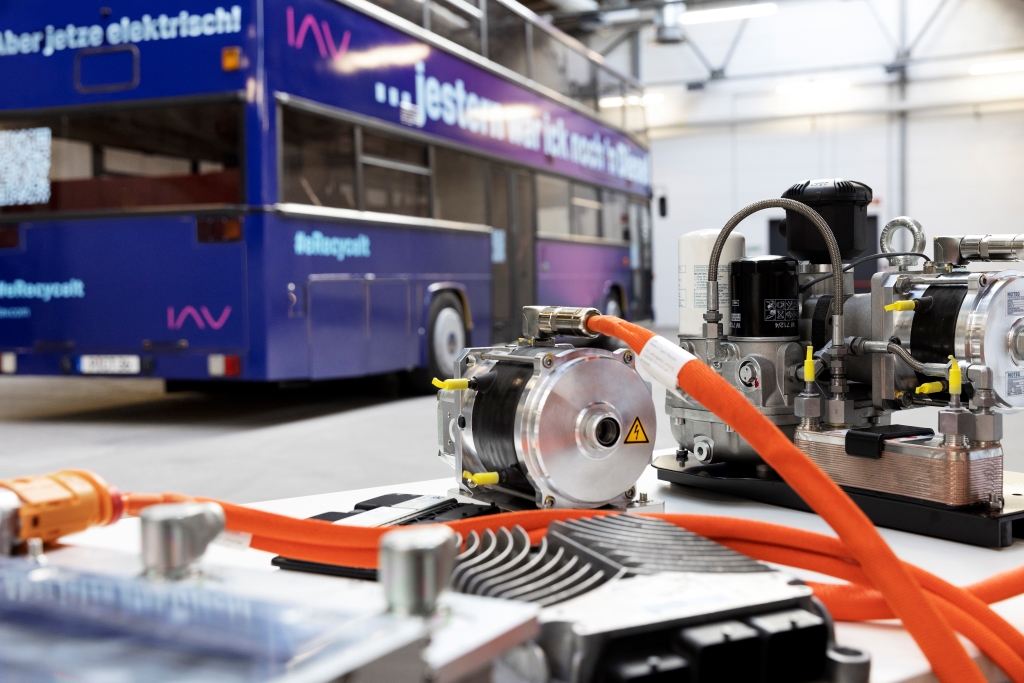
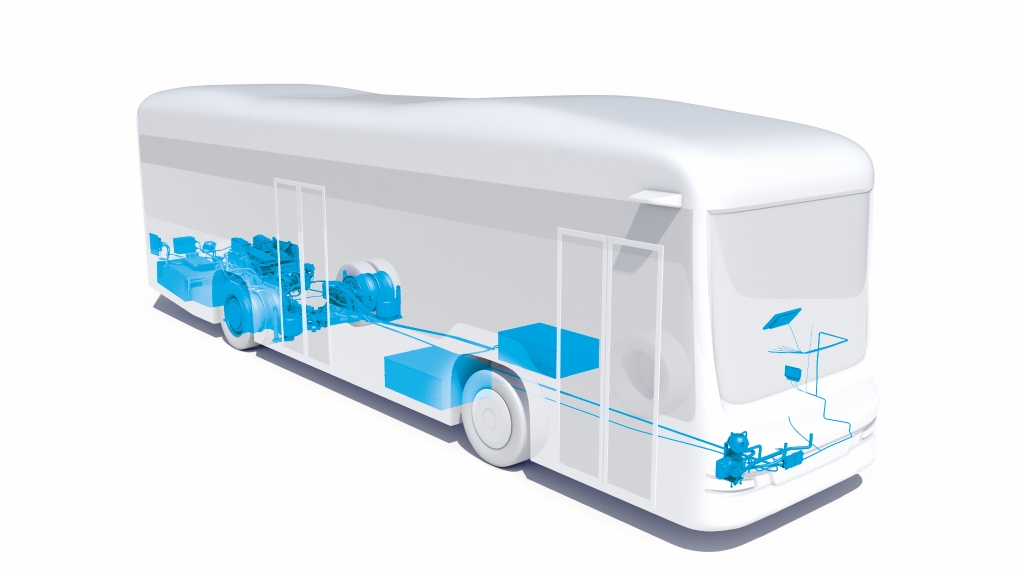
IAV emphasises that converting old buses to a new electric drive is environmentally friendly in every respect. Not only because the buses are now emission-free, but also because valuable raw materials such as aluminium and steel are not consumed – the bus already exists. And the production of aluminium and steel releases a lot of CO2.
The bus is propelled by two “ZAwheel” wheel hub motors made by Ziehl-Abegg from Künzelsau in the wheels of the rear axle, which together produce 200 kW (equivalent to 272 hp). The high-voltage batteries with an output of 147 kWh have found their place under the floor of the car behind the wheels of the front axle. In the rear, where the two cars had their engine in their “diesel life”, is the central control unit. The high-voltage section works with a voltage of 750 volts.
The Elcty-retooled double-decker reaches a top speed of 65 km/h. It could do more, but IAV has “locked” it at this speed. After all, 65 km/h is enough for a city bus and even more so for a sightseeing bus. At an outside temperature of 20 degrees, IAV reports a power consumption of 80 kWh per 100 km. And they guarantee a range of 120 kilometres. That is absolutely sufficient for a city tour bus; a car on a normal route would have to be recharged en route. IAV allows recharging with both direct and alternating current.
For general safety, the two converted double-deckers are equipped with the anti-lock braking system ABS, which ensures that the cars always remain steerable even under heavy braking.
08.11.2022
